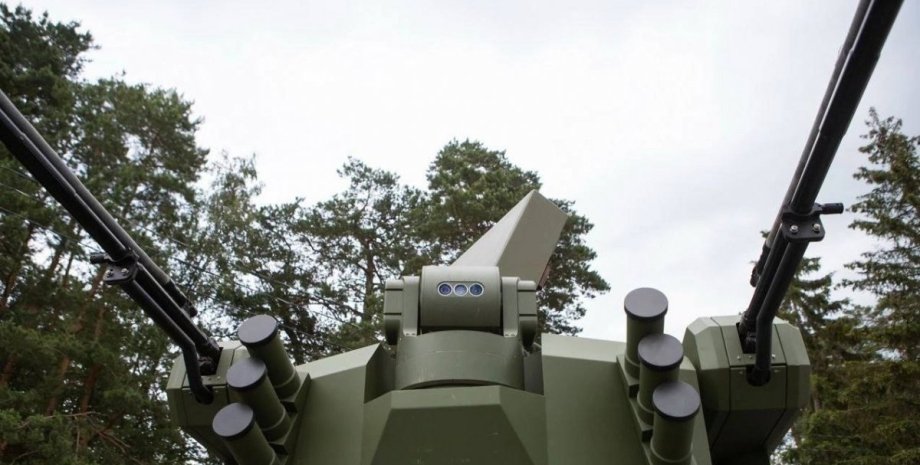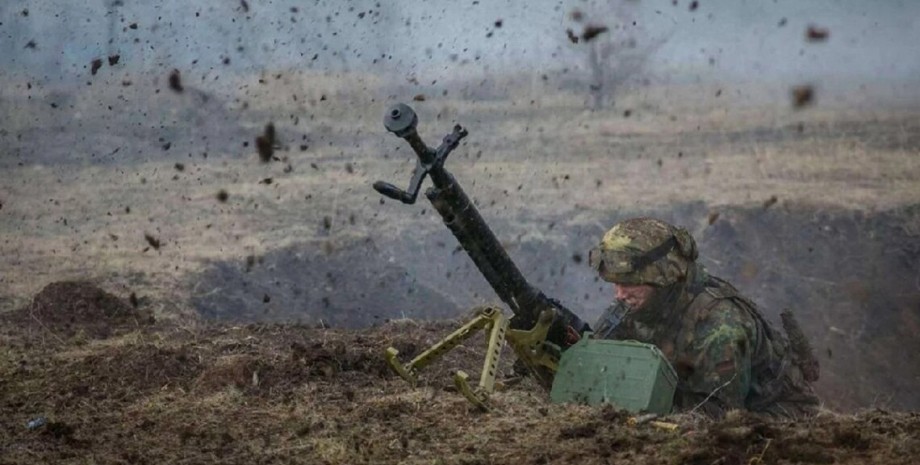
According to some reports, in the last year the Chinese shipbuilding industry has built more civilian and warships than US shipyards throughout the Second World War. Brandon J. Weikhert writes about it in his article, which was translated by Focus. Type 052d (NATO Luyang III-Class) is the most important improvement of Chinese marine combat potential.
The new ship, nicknamed "Chinese Aegis" thanks to its advanced radars and combat systems, is a multi -purpose destroyer with controlled missiles, designed for action in "blue waters" and equipped with the most modern sensors, weapons and communication systems. Since China's naval potential is constantly evolving, Type 052D was a critical asset for Strategic Ambitias, especially in the conditions of preparation for Taiwan invasion.
The Type 052D destroyer was put into effect in 2014, when a flagship called Kunming came from the shipy). The size of the Type 052D can be compared to the Western destroyers, such as the Type 45 British Royal Fleet. Chinese Type 052D is very secretive due to a reduced radar section due to the sloping superstructure and integrated mast.
The ship is equipped with a gas turbine power plant, which provides a range of more than 8300 km, which is sufficient for regional operations, which Chinese NVAK will be more and more often carried out in the coming years. The most favorable feature of the destroyer is a 64-oral vertical start system (VLS), consisting of 32 cells in the nasal and 32-in the feed and is able to start a wide range of missiles.
Among them are the HHQ-9 Surface-Barpora missiles, supersonic anti-ship anti-ship, YJ-18 (ASCM) with a flight range up to 500 km, winged CJ-10 winged rocket for accurate shocks and a prototyic rocket for the control of CY-5. As for the VLS itself, the destroyer uses the GJB 5860-2006, which allows both "hot" and "cold" Starts and makes Type 052D the first specialized multi-purpose destroyer China.
The Type 052D destroyer complex, in the center of which is an active electron-scanning grille (AESA) Type 346A (also known as the "Dragon's eye"), is truly impressive and is a real challenge for Western rivals. This four -panel radar system provides constant observation of the air and surface environment, capable of identifying and tracking several goals at a time at a distance of several hundred kilometers.
Additional sensors contain Type 364, Type 366 and Type 517B, as well as SJD-9 and SJG-311 for prototic struggle (PM). The Type 052D uses a combined transmission system (JSIDLS), similar to the NATO LINK 16. The Chinese Type 052D also uses the overall tactical data system (NAVAL Common Tactical Data Link, NCTDL) to improve prompt compatibility with other ships.
This is another sign of what I have been asserting for many years: Chinese NVAK capabilities have been equal to China's capabilities of mass systems and warships. Today, China has a huge number of simple in the production of warships, which are not inferior to the western equipment. This is a serious problem for Taiwan defenders.
In addition to VLS, Type 052D is equipped with a 130-mm gun H/PJ-38 for damage to surface and ground targets, as well as a system of melee (CIWS) TYPE 730 or Type 1130 for point defense, low-range HHQ-10 and two triple. The Type 052D has an hangar for one helicopter, usually Harbin Z-9C or Kamov Ka-28, and the elongated Type 052DL version is designed to accommodate a larger Z-20 helicopter, which will be presented in the stealth variant.
The Z-20 is similar to the black hawk steals, which was used by American "sea seals" in a raid against Ben Laden in Abbotabad (Pakistan) in 2011. Today, the NVAK operates about 25 Type 052D destroyers, including 13 standard variants and 12 Type 052DL, and even more destroyers are already being built on the Dalian-Songan-Chansin shipyards. Fast rates of production-about 3. 1 ships a year compared to 1.
6 destroyers of the US Navy ARleigh Burke-China's desire to build a fleet that will completely exceed the US Navy numerically, and possibly technically, in the Indo-Pacific. Indeed, if you look at the number and dispositions of the US Navy and their allies on the first island chain, the US opportunities seem completely incomparable.
Any actions of China against the neighboring Taiwan are likely to begin with the large-scale maritime blockade of the island; After a long blockade for many weeks or months, the Chinese will make a massive invasion - undoubtedly, with the use of powerful bombardment from ships to shore, air attacks, similar to those that the United States has been in Iraq in 1991 and 2003, and planting of the troops, which has no analogues in the planting.
Chinese Type 052D will provide the cover of these forces. The main role played by the Type 052D vessels during the invasion is the protection of the naval and amphibian forces. The HHQ-9 SCRs with a flight range of about 150 km will be able to hit enemy aircraft, winged missiles and potentially stealth goals, using the advanced capabilities of the above mentioned radar Aesa Type 346A.
The ability of the destroyer to detect and strike several air threats will be of key importance for counteracting the Taiwanese Air Force, which includes F-16V fighters and anti-ship ballistic missiles such as Harpoon Block IC. To prevent Taiwan not to interfere with Chinese landing, Type 052D will apply its CiWS and HHQ-10 SPR to protect against missiles and low-flight missiles and its network data transmission channels will allow him to coordinate with other NMS. Air defense.
The Type 052D can use the YJ-18 Supplement Missile with 500 km claimed, which poses a significant threat to Taiwan's surface fleet, which consists of old ships such as KEE LUNG and Cheng Kung. In any hypothetical collision, one Type 052D or a whole squadron of these warships will block the current Taiwan naval defense. The high speed YJ-18 and the flight profile above the sea surface will complicate the rocket intercepting even for upgraded Taiwanese Harpoon or NTU.
In addition to the Taiwanese Navy, the Type 052D will also play a role in any operations on the control of the restriction/prohibition of access (A2/AD) aimed at restraining or distracting the US Navy forces, such as aircraft shock groups, headed by Nimitz or Ford.
Although at the Type 052D a total of 64 VLS cells compared to 96 at the Arleigh Burke class, its ability to start the YJ-18 volley with the support of the intelligence with satellites and UAVs will create problems for the US air defense. On the other hand, a shorter range of Type 052D can limit its endurance in long -term fighting in "blue waters" far from Chinese bases. However, the likelihood that these ships will be involved in combat collisions in deep -drawn ones are small.
In the end, Beijing is well aware of the geography of his near abroad and plans to use a relatively close landscape of the territories closest to the Chinese shores to their own interests. Any American forces in Blue Waters will deal with A2/AD missiles outside the visual horizon (BVR) and a hypersonic weapon, which will negate the threat to the Type 052D ships. In addition, the Type 052D may be tasked with prototic struggle.
Submarines, especially the US Navy, will pose a threat to the Chinese invasion forces, as shock submarines, such as Virginia or Seawolf submarines, can aim at landing ships or NVAC blockade. The SJD-9 and SJD-311, protical CY 5 missiles and the Z-20 helicopter in the elongated destroyer give the Type 052D an advantage in identifying and neutralizing underwater threats.
In the Taiwan Taiwan, the Type 052D Taiwan will probably work together with the Type 054A frigates and Type 056A corvettes, equipped with a plane, to create multi -level defense against submarines. Finally, the winged CJ-10 missiles, which are equipped with the Type 052D, will allow him to make accurate strikes on the Taiwan military infrastructure, such as aerodromes, command centers and coastal defense to prepare the ground for planting an amphibious dean.
These long -range blows will be used to reduce Taiwan's ability to coordinate the defense and disruption of its air and maritime operations. The Chinese have already equal the Americans when it comes to a scenario of developments in the Taiwanese Strait. Yes, the US will be able to repel. With the help of Japan and Australia, they are capable of much to cause bloody blows to the Chinese. Of course, if Uncle Sam will come up with how to penetrate the swollen Bubbles A2/AD surrounding the region.
If not, Taiwan loses by default. If America is seriously intended to withstand Chinese threat in the Taiwanese Strait, it will need a lot more unmanned aerial and submarine, as well as hypersonic missiles before it decides for any action.
The main question is whether it understands this Pentagon? Does he still behave as if in 1996 and a couple of American aircraft carriers can restrain China's attack on Taiwan? More importantly, is America's political system ready for the war necessary to protect Taiwan? Does the US public consider it a decent enterprise? And is America ready to withstand the consequences of such a conflict - a rapid increase in prices, the loss of access to many consumer goods and perhaps a direct retribution by Chinese agents within the United States? All these questions should be answered, and in the near future.
Brandon J. Weikhert is a national security analyst, a former Congress employee and a geopolitical analyst who writes for The Washington Times, Asia Times and The-Pipeline. Author of the books "Winning Space: How America Remains a SuperPower", "Biohacked: China's Race to Control Life" and "The Shadow War: Iran's Quest for Supremacy". His new book, A Disaster of Our Own Making: How The West Lost Ukraine, is already available in bookstores. Wayerrt can be monitored on Twitter: @wethebrandon.










All rights reserved IN-Ukraine.info - 2022